Research Overview
Web3 is transforming digital experiences by prioritizing decentralization, user empowerment, and transparency. My latest research, "Web3 Design: Principles, Values, and Best Practices from Leading Platforms", co-authored with Ehsan Naraghipour, explores how pioneering Web3 platforms embody these principles through their design choices. The study analyzes key aspects such as color palettes, typography, shapes and patterns, and overall design styles and frameworks to understand how Web3’s ethos is reflected in modern UI/UX design.
Research Motivation
As a Technical Product Manager, I have often faced challenges when working with design teams on Web3 products. Unlike Web2, where established design systems and frameworks exist, Web3 lacks clear, reliable studies that align design principles with decentralized values. This gap has led to inconsistencies, inefficiencies, and a lack of cohesion in Web3 user experiences. Our research aims to bridge this gap by providing a structured analysis of design patterns, trends, and best practices observed in leading Web3 platforms.
The shift from traditional Web2 to Web3 introduces fundamental changes in digital interaction, requiring design approaches that align with decentralized principles. While blockchain technology provides the foundation for security and trustlessness, design elements play a crucial role in making these platforms accessible, inclusive, and transparent. The study aims to answer the following questions:
- How do leading Web3 platforms visually communicate decentralization and user empowerment?
- What common design frameworks and principles emerge across top Web3 applications?
- How do these platforms ensure trust and inclusivity through design?
Methodology of this Blockchain Research
To analyze how Web3’s core values translate into design elements, this study employs a comparative design analysis of 15 pioneering Web3 businesses, evaluating:
- Color Palettes: How color choices evoke transparency, security, and innovation.
- Typography: How fonts contribute to the perception of decentralization and accessibility.
- Shapes & Patterns: The role of geometric and organic elements in visual storytelling.
- Design Styles & Frameworks: The adoption of minimalist vs. futuristic design trends.
We conducted a comparative analysis, highlighting similarities and divergences among platforms, and examined implications for the future of Web3 UX/UI.
Key findings
Color Theory Reflecting Trust & Decentralization
Many Web3 platforms favor cool tones (blue, green, and purple) to evoke trust and stability.
Bright neon colors are often used to symbolize innovation and cutting-edge technology.
Typography and Readability in Decentralized Platforms
Sans-serif fonts dominate, offering clarity, accessibility, and modern aesthetics.
Variable fonts allow scalability and adaptability across different devices and Web3 applications.
Shapes & Patterns Inspired by Transparency and Security
Abstract, geometric patterns symbolize interconnectedness and decentralization.
Organic, fluid designs are used in community-driven platforms to reflect openness and inclusivity.
Minimalist Yet Futuristic Design Trends
Web3 platforms balance minimalism with futuristic visual elements to create an intuitive yet innovative experience.
Dark mode themes with neon gradients are frequently used to enhance contrast and digital aesthetics.
Implications for Future Web3 Design Trends
Evolving Design Standards: As Web3 matures, UI/UX standards will become more refined, integrating both accessibility and immersive experiences.
Trust-building Through Transparency: Design will play a key role in reinforcing trustlessness and transparency by making blockchain-based interactions clearer and more user-friendly.
Adaptive Design Frameworks: Web3 applications must adopt responsive and scalable designs to accommodate multi-chain and cross-platform functionalities.
Final Thoughts
Web3 design is not just about aesthetics—it is a reflection of decentralized values. By analyzing 15 leading platforms, our research highlights the evolving best practices in Web3 UX/UI. As more businesses enter the decentralized space, aligning design with Web3 principles will be essential for adoption, trust, and usability.
This research aims to equip product managers, designers, and businesses with a structured approach to building more coherent, user-friendly, and future-proof Web3 platforms.
Title: Web3 Design: Principles, Values, and Best Practices from Leading Platforms
Authors: Javad Farahani, Ehsan Naraghipour
Published on: February 2025
Access the Full Paper: ResearchGate
